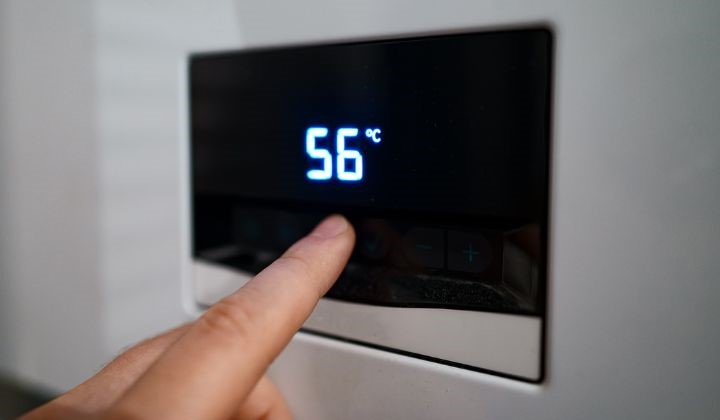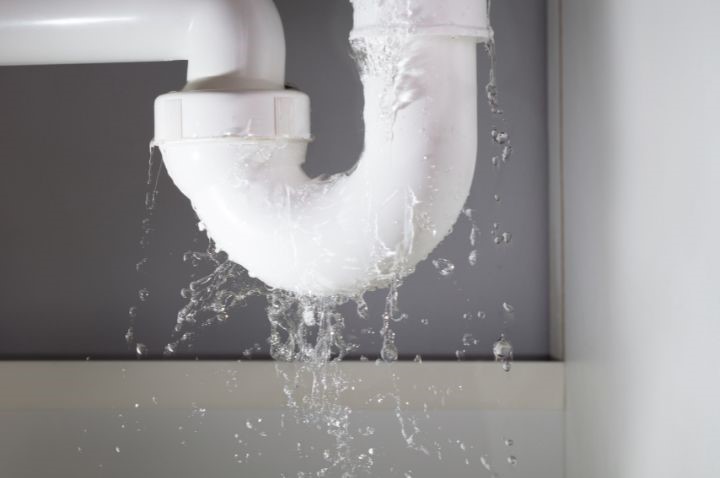
Favourites
Sign in to your account
By adding to Favourites, you can…
- Save products or resource documents you view regularly
- Save time with quick access to frequently viewed items
Please sign in or create an account to add to your Favourites.
Articles
August 20, 2024
Electric Water Heater Not Working? 6 Common Causes
When compared to gas water heaters, electric hot water systems offer ease of installation, safety, and a lower initial purchase price. This can make them an appealing option for smaller homes and those without access to gas lines.
However, as with any appliance, issues can arise. Here are 6 common causes of how an electric water heater may not work and standard solutions to these causes.
In this article, we’ll be going through a few common issues:
- No hot water
- Water is too hot or too cold
- Leaking water system
- Rusty, coloured or smelly water
- Low water pressure
- Error codes or lit-up indicator
Electric water heater repairs should only be performed by a licensed plumber.
[IMPORTANT: When inspecting a unit, always make sure the power supply is turned off beforehand].
1. No hot water
If the water heater was working properly earlier in the day, the homeowner may need to wait up to a few hours for the water to heat up. Storage electric water heaters may run out of water with excess usage. This is especially true of smaller water heaters. In this case time may be all that is required to get new hot water. If the unit is still running only lukewarm water, the homeowner should consider installing a larger Bromic hot water system or an extra water heater for the kitchen or bathroom.
Before further investigating, the home-owner should:
- Check the power supply: An interruption in power or a tripped circuit breaker may turn off the hot water and the heating elements temporarily. The homeowner should check the power supply for blown fuses or if the circuit breaker was activated. Try resetting the unit and checking if there is power to the unit.
- Reset the high-temperature cut-off switch if it has tripped: If this is still an issue, the safety cut-out may be faulty and the unit may need to be replaced.
If the water heater still doesn’t work, the heater may be faulty and should be inspected by a licensed plumber:
- For water heaters with replaceable parts, check the thermostat and heating element. The thermostat and heating element can be tested with a multimeter. A broken thermostat or heating element should be replaced.
- For older water heaters, the heater may have broken down or corroded with life expectancy. The appliance should be replaced.

2. Water is too hot or too cold
Water heaters heat water to a specified temperature based on the thermostat. Most water heaters can be manually adjusted with a dial.
Some electric water heaters even have an electronic viewfinder that provides a clear reading of the temperature. For more information, check out our complete guide to how hot water systems work.
If you are finding that the water is too hot or not hot enough, then you may have a faulty thermostat or heater.
A licensed plumber should step in to:
- Check the tempering valve and pressure relief valve: Check valves for corrosion and leaks. The pressure-relief valve should be tested. Water and air should flow out when this valve is switched on.
- Check if the thermostat needs to be repositioned: The access panel should be opened and thermostat repositioned if it is not sitting flush with the hot water tank.
- Flush out the system: Sediment can build up inside a water heater over time, preventing the unit from heating water. This can happen over time, especially in areas where water has higher mineral levels, such as Western Australia and South Australia. The system should be flushed out by turning it off, letting it cool down and draining all the water out. This is achieved by switching on the drain valve at the base of the water heater tank. A flush-out should be done on a regular basis, depending on your area.
- For water heaters with replaceable parts, test the thermostat and heating element: The thermostat and heating element can be tested with a multimeter. A broken heating element and thermostat should be replaced.
- Replace the water heater: For corroding heaters or smaller heaters that cannot be repaired, the appliance should be replaced.
3. Leaking system
A leaking hot water system is often caused by faulty or loose valves and plumbing connections. These leaks are often visible upon a quick inspection
To identify the source of the water leak:
- Turn off the power and water supply: Turning off the power supply is extremely important. You don’t want electricity coming in contact with water!
- Carefully inspect the heater and all connections: Look out for dripping valves or connections and where the water is pooling.
Once you identify the source of the leak:
- If the water is pooling from the top: Pooling water from the top of the water heater can indicate a loose pipe connection at the cold or hot water inlet. The temperature of the leak can be an important signifier of where the leak is occurring. If the leak is warm, then it is likely a leaking outlet pipe. If it’s cold, this could be potentially a cold-water inlet. Loose connections can be tightened with a wrench. If the fitting has corroded or broken, the part should be replaced if possible.
- If water is dripping from a valve or connection: Leaking valves and plumbing connections can be tightened with a wrench. If the temperature pressure relief valve is set at the correct temperature and continues to leak, the valve needs to be replaced. Don’t forget to also look out for corrosion. Rusty valves should also be replaced.
- Other issues: Water can also leak from a cracked or corroded tank. If this is the case, the tank should be replaced.

4. Rusty, coloured or smelly water
A foul odour from the tap can indicate bacterial growth or corrosion in the electric water system.
If the smell comes from multiple taps or faucets, the plumbing system needs to be inspected. Water that smells like rotten eggs can indicate bacterial growth.
If ONLY the hot water smells, the issue is almost certainly coming from the electric hot water system. The anode rod inside the hot water tank could be corroded, or bacteria growth may have developed in the piping system.
The anode rod is designed to attract corrosive elements in the water. Over time, the anode rod can become fully corroded which no longer protects the tank from rusting. To inspect the anode rod, turn off the power and water supply to the heater.
Drain some water to look at the anode rod which is usually located at the top of the heater. If the anode rod is corroded, it needs to be replaced.
If the water is brown, the tank may have corroded. In this case, the tank should be replaced. Pipes should also be inspected and fixed to ensure water is clean and safe to use.

5. Low water pressure
Did you know the actual water pressure can be worked out by using a device called a pressure gauge? If the pressure is under 275kPA, it is considered to be low water pressure.
One of the most frustrating day-to-day plumbing issues can be low water pressure. Low water pressure may occur because of debris or sediment build-up in taps.
Before further investigating, the homeowner should:
- Check if excess water is being used: If multiple appliances are being used at the same time, storage water heaters can run out of water. This can cause water pressure to drop. This can be an ongoing issue if the water heater installed is too small for the household needs.
- If this is an issue with multiple water outlets and appliances, check the water supply: Check your water supply and see if there has been a water interruption in your area. Make sure the stop valve is fully open. If the issue is only in your household, there could be an issue with the plumbing system. If both the cold and hot water taps have low water supply, this could be due to a faulty shut-off valve or pressure regulator.
If the issue is only with the hot water outlet, there could be an issue with the water heater or pipes. A professional plumber should:
- Check for and replace leaky or corroded plumbing connections: A corroded or leaking water system should be fixed or replaced.
- Check and replace the filter: Some hot water systems are fitted with filters on the inlet and outlet. Overtime, sediment can build-up. This filter should be replaced and cleaned.
- Check for potential pipe blockage: A clogged pipe can be caused by sediment buildup and debris.
- Replace the water appliance if faulty. Sometimes, systems deteriorate to the point it takes longer to achieve adequate water pressure and avoid leaks. . This means it’s time for a hot water system replacement.
6. Error codes or lit-up indicator
Some newer electric heaters have an LED monitor or indicator. An indicator may light up or an error code may display on the heater monitor. These error codes alert you to different problems occurring.
For Bromic instantaneous hot water systems, you may get 1 of the following 4 different error codes possible.
- ER > T INLET
- ER > T OUTLET
- ER > T MAX
- ER > AIR 1
These error codes represent several different issues such as a faulty connection, a faulty sensor, a heater that has hit the high-temperature limit, or air bubbles in the heating unit. To solve these issues, check our water heater repair instruction manual for more information.
Browse Bromic hot water systems
Electric water heaters offer a more energy-efficient way to heat water. As the hot water supply is only heated when the hot water faucet is turned on, Bromic Instantaneous Electric Hot Water ensures low energy consumption and reduces heat loss.
Instant electric water heaters could also deliver savings of 25% off household energy bills each year. If your electric water heater is not meeting your needs, explore our range of instant electric hot water systems today.
If you’re experiencing issues with your Bromic Electric Water Heater, please contact Bromic Customer Service.
